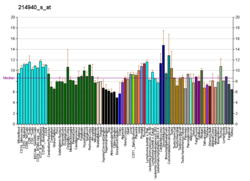Clinical significance
In humans, selected genomic regions based on 150 SNPs were identified in a genome-wide association study (GWAS) on coronary artery disease. Accordingly, the association between recent smoking and the CpG sites within and near these coronary artery disease-related genes were investigated in 724 Caucasian subjects from the Rotterdam Study. The identified methylation sites were found in SMG6 together with other genes, and several of these sites exhibited lower methylation in subjects currently smoking compared to never smoking. [22]
Clinical marker
A multi-locus genetic risk score study based on a combination of 27 loci, including the SMG6 gene, identified individuals at increased risk for both incident and recurrent coronary artery disease events, as well as an enhanced clinical benefit from statin therapy. The study was based on a community cohort study (the Malmo Diet and Cancer study) and four additional randomized controlled trials of primary prevention cohorts (JUPITER and ASCOT) and secondary prevention cohorts (CARE and PROVE IT-TIMI 22). [12]
This page is based on this
Wikipedia article Text is available under the
CC BY-SA 4.0 license; additional terms may apply.
Images, videos and audio are available under their respective licenses.








